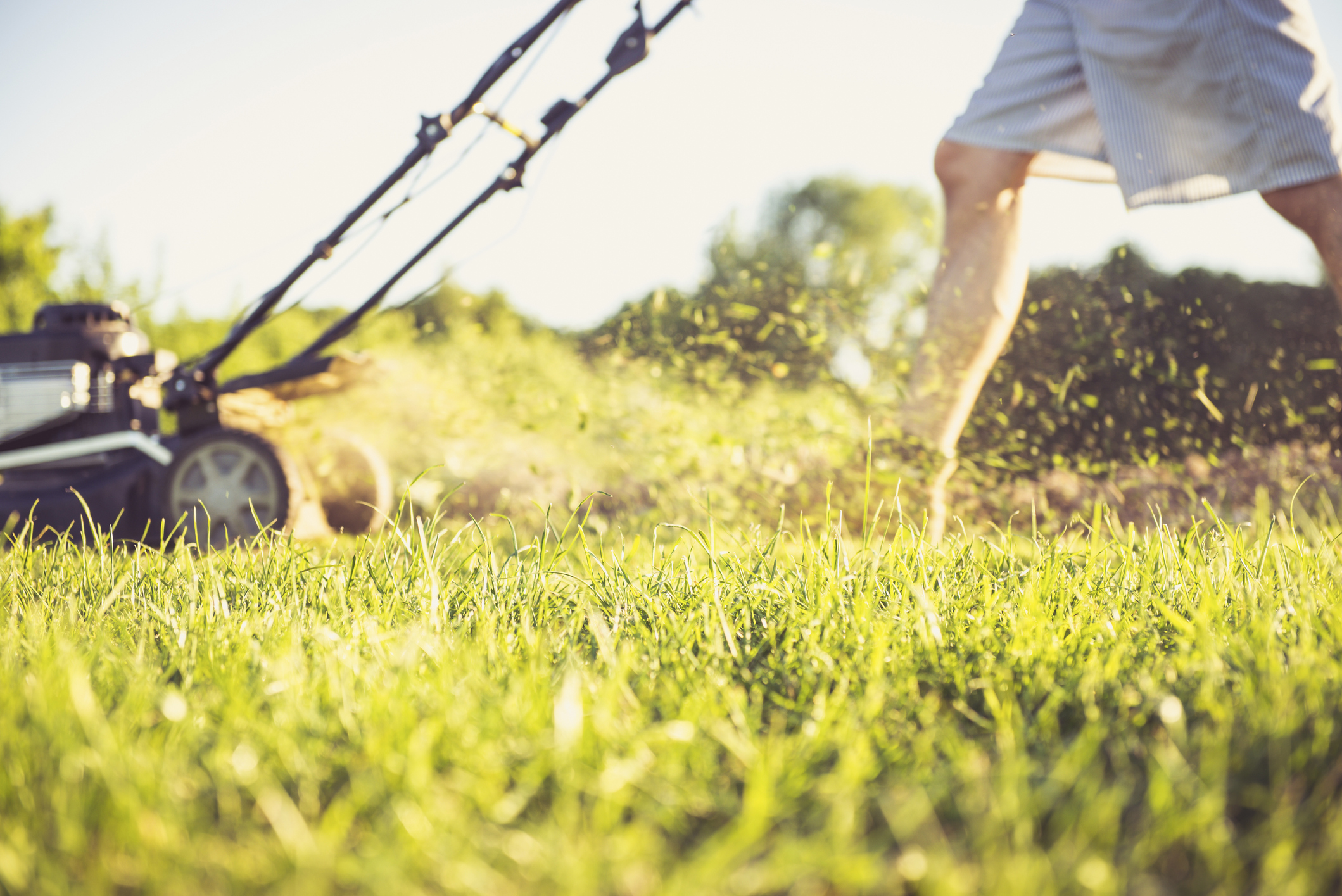How to sharpen lawnmower blades (safely)
Find out how to sharpen lawnmower blades without coming to harm with our expert guide


To keep your turf in great shape, you might need to know how to sharpen lawnmower blades. Mowing is an important element in ensuring a lawn stays looking its best and, for this, lawnmower blades need to be sharp.
When the blades become blunter, they’ll tear rather than cut which will compromise the appearance of the lawn and can introduce disease. Dull blades also make the job of mowing lengthier, stopping you getting on with other tasks, or just sitting back and admiring the green and healthy lawn.
Even if you have the best lawnmower, you can see why keeping the blades in top shape is essential. So, our guide has the details you need on how to sharpen lawnmower blades while staying safe, and we’ve asked the experts to share their advice, too.
How to sharpen lawnmower blades
Shopping list:
1. Sturdy gloves: these are an Amazon bestseller
2. Eye protection: browse a range
3. A block of wood: to prevent blade spin as your remove it
4. A wrench or screwdrive: to remove the blade
5. 10in mill bastard file: like these
6. Clamp or vise: to hold your blade as you sharpen
7. Angle grinder with flap disk or drill-powered sharpener: optional
Before you mow your lawn, check the blades are clean, free from debris and looking sharp. If not, you will need to brush them down and set to sharpening.
Sharpening lawnmower blades is an important task. ‘A sharpened blade will produce a quick, clean and consistent cut, leaving your lawn looking beautiful, healthy and pristine,’ says Lawnmower Larry.
‘Dull blades can result in a patchy job with an uneven height. Grass can appear frayed and damaged and ruin your aesthetic. An unsharpened blade can even harm your grass and expose it to infection and fungal growth.’
You could get a pro to do the job, but DIYing can work just fine, so long as you follow the rules on safety and have the right tooks. This is how to sharpen lawnmower blades.
Get small space home decor ideas, celeb inspiration, DIY tips and more, straight to your inbox!
1. Take safety precautions
It is vital to work safely when sharpening lawnmower blade. ‘A sturdy pair of gloves, and eye and/or ear protection are necessary to avoid getting cut or burned by sparks when sharpening,’ says turfgrass and horticulture science specialist Eric De Boer PhD of Simple Lawn Solutions.
Wear long sleeves and cover your legs for the same reasons.
2. Remove the spark plug or battery
There’s another task to perform to prevent accidents. ‘Before attempting to remove the blade, the spark plug should be removed to avoid the risk of the machine accidentally starting,’ say the experts at Mowers Online. ‘In the case of a battery powered machine the battery should be removed.’ As should any safety keys.
3. Remove the blade
Tip the mower onto its side, air filter and carburetor side upwards.
Next, take a moment to mark the blade. ‘Make sure to mark the bottom side of your mower blade before removing it,’ says Toby Schulz of Lawn.com.au. ‘If you reinstall the blade upside-down, it won’t be able to cut grass properly.’
Take further precautions to prevent injury. ‘An important safety tool can be a block of wood to place under your mower deck between the deck and blade to prohibit the blade from spinning as you are removing it for sharpening,‘ says Eric De Boer. ‘Injuries can happen to exposed skin or eyes from sharpening tools or the mower blade itself.’
Note that removal may be tricky. ‘If it’s been a while since you’ve removed the blade, some WD-40 or other lubricant may be helpful to break the bolt free that holds your blade in place,’ says Eric.
Check the manufacturer’s instructions on removing the blade – generally you will just need to loosen a bolt or a nut using a wrench. ‘You should always use protective gloves when working with sharp objects,’ says Andrew Porwol, owner of Garden Centre Shopping.
Before doing anything else, take a good look at the blade. ‘Once the blade is removed, check to make sure that it is not cracked or bent, in which case it would be better to replace it,’ says Eric.

4. Sharpen the lawnmower blade by hand
There is a choice of ways to sharpen a lawnmower blade. Whichever you choose, a blade should be made ‘butter-knife’ sharp.
A lawnmower blade can be sharpened by hand using a 10in mill bastard file. Clamp it in a vise to hold it securely first. ‘Run the file across the mower blade in one direction at the same angle as the original cutting blade angle, using enough pressure to remove nicks and burrs,’ says Eric De Boer.
5. Sharpen a lawnmower blade with a machine
As an alternative to sharpening a lawnmower blade by hand, you can use a machine or attachment for your power tools. This can be the best way to sharpen lawnmower blades provided you have experience and wear protective clothing.
‘The best and easiest way to sharpen lawnmower blades is by using an angle grinder and a flap disk or by using a drill-powered blade sharpener,’ says Eric De Boer. ‘The idea is to remove any nicks, burrs, or rough spots along the top and bottom of the blade edge without making the blade come to a sharp pointy edge. A thinly sharpened, super-sharp blade is easier to get nicked and becomes dull much faster.’
6. Check the balance of the lawnmower blade
Before you reinstall the blade into the lawnmower, check its balance. ‘After sharpening, hang the blade from a nail and check for proper balance,’ says Eric De Boer. ‘If the blade falls to one side, continue grinding the heavier side until the blade is balanced.’
Once it’s balanced, the blade can be reinstalled.
Can I sharpen my lawnmower blades without taking them off?
Lawnmower blades should not be sharpened without taking them off. ‘Blades should always be removed from the mower before sharpening,’ say the experts from Mowers Online. ‘It is much more difficult to access the blade whilst on the machine and the chances of the blade slipping and causing injury are far higher.’
How often should mower blades be sharpened?
How often lawnmower blades need to be sharpened depends on how often the mower is used. ‘In general it is a good idea to sharpen your mower blade every 25 to 50 hours of use or at least twice every season,’ suggests Eric De Boer.

Sarah is a freelance journalist and editor writing for websites, national newspapers, and magazines. She’s spent most of her journalistic career specialising in homes – long enough to see fridges become smart, decorating fashions embrace both minimalism and maximalism, and interiors that blur the indoor/outdoor link become a must-have. She loves testing the latest home appliances, revealing the trends in furnishings and fittings for every room, and investigating the benefits, costs and practicalities of home improvement. It's no big surprise that she likes to put what she writes about into practice, and is a serial house revamper. For Realhomes.com, Sarah reviews coffee machines and vacuum cleaners, taking them through their paces at home to give us an honest, real life review and comparison of every model.